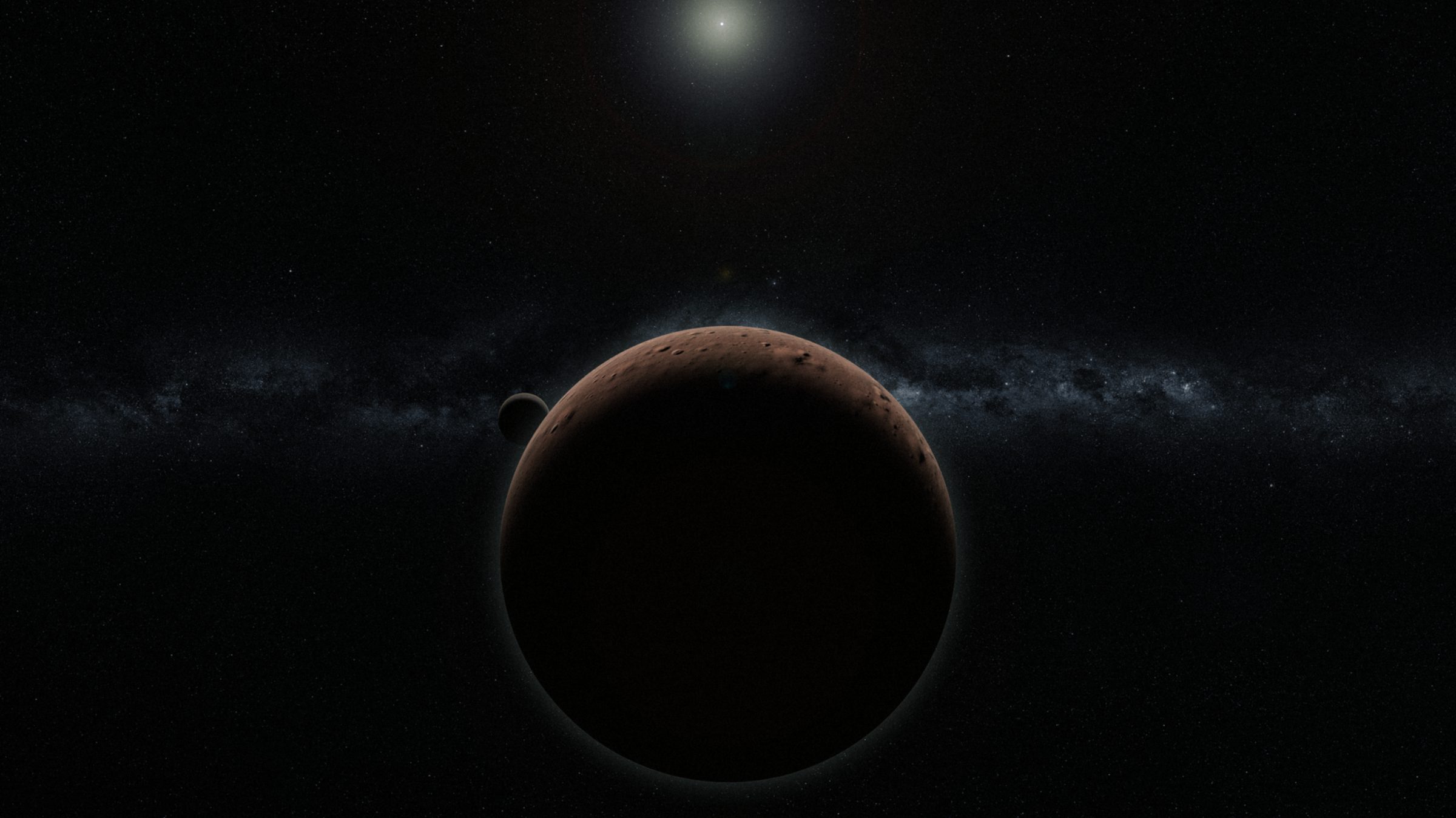Public Invited to Help Name the Largest Unnamed World in the Solar System
For Immediate Release
April 09, 2019
Contact
Danielle Gunn
Email: danielle.gunn@planetary.org
Phone: +1-626-793-5100
More than 10 years since its discovery, (225088) 2007 OR10 is the largest minor planet in our solar system without a name, and the 3 astronomers who discovered it want the public’s help to change that. In an article published by The Planetary Society today, Meg Schwamb, Mike Brown, and David Rabinowitz, the astronomers who helped discover 2007 OR10, announced a campaign inviting the public to pick the best name to submit to the International Astronomical Union (IAU) for official recognition.
“It’s time to give 2007 OR10 a name. We’re asking for your help to pick a suitable name for 2007 OR10 to submit to the International Astronomical Union (IAU). The IAU formally bestows permanent names upon Solar System minor planets, but the discoverers have a roughly 10-year period after the body has a well-determined orbit to suggest a name for the IAU to consider. We have 3 naming suggestions that fit the IAU naming regulations and are associated with mythological creatures and figures that reflect aspects of 2007 OR10’s physical properties. The option with the most votes will be the one that we will formally submit to the IAU for consideration. Head to http://www.2007OR10.name and vote for your favorite naming suggestion. Voting ends on May 10th.”
2007 OR10's orbit places it in the Kuiper belt, the sea of icy planetesimals that orbit beyond Neptune. More than 3000 Kuiper belt objects (KBOs) have been discovered to date. Near-infrared spectroscopy has revealed that there are large quantities of pure water ice and possibly traces of methane ice on 2007 OR10's surface. 2007 OR10 has one of the reddest surfaces ever found in the Kuiper belt. It is estimated to be 1250 kilometers in diameter, which makes it smaller than Pluto and Eris, similar in size to Pluto’s moon Charon. 2007 OR10 is likely large enough for gravity to make it round, making it a probable dwarf planet.

2007 OR10 was discovered on July 17, 2007, as part of the Palomar Distant Solar System Survey that searched for distant bodies in the Kuiper belt and beyond. The team included Mike Brown, principal investigator of the Palomar Distant Solar System Survey, David Rabinowitz, collaborator and principal investigator of the QUEST camera used in the discovery of 2007 OR10, and Meg Schwamb, who helped run the Palomar Distant Solar System Survey as a graduate student at Caltech.
The naming suggestions have been pre-selected to meet the requirements of the International Astronomical Union (IAU).
Gonggong
Gonggong is a Chinese water god with red hair and a serpent-like tail. He is known for creating chaos, causing flooding, and tilting the Earth.
Holle
A European winter goddess of fertility, rebirth, and women. Holle makes snow by shaking out her bed. She is a patroness of household crafts especially spinning. She is linked to the Yuletide (winter solstice) season associated with mistletoe and holly, evergreen plants bearing red berries.
Vili
Part of the Æsir, Vili is a Nordic diety. Vili, together with his brothers Odin and Vé, defeated frost giant Ymir and used Ymir's body to create the universe. Ymir's flesh and bones were forged into the Earth, with Ymir's blood becoming the rivers and oceans.
The deadline to cast a vote is 11:59 pm PDT on May 10, 2019.
Press Resources
Interviews available upon request. Contact Danielle Gunn, chief communications officer, to coordinate: danielle.gunn@planetary.org.
About The Planetary Society
With a global community of more than 2 million space enthusiasts, The Planetary Society is the world’s largest and most influential space advocacy organization. Founded in 1980 by Carl Sagan, Bruce Murray, and Louis Friedman and today led by CEO Bill Nye, we empower the public to take a meaningful role in advancing space exploration through advocacy, education outreach, scientific innovation, and global collaboration. Together with our members and supporters, we’re on a mission to explore worlds, find life off Earth, and protect our planet from dangerous asteroids. To learn more, visit www.planetary.org.
###


 Explore Worlds
Explore Worlds Find Life
Find Life Defend Earth
Defend Earth

